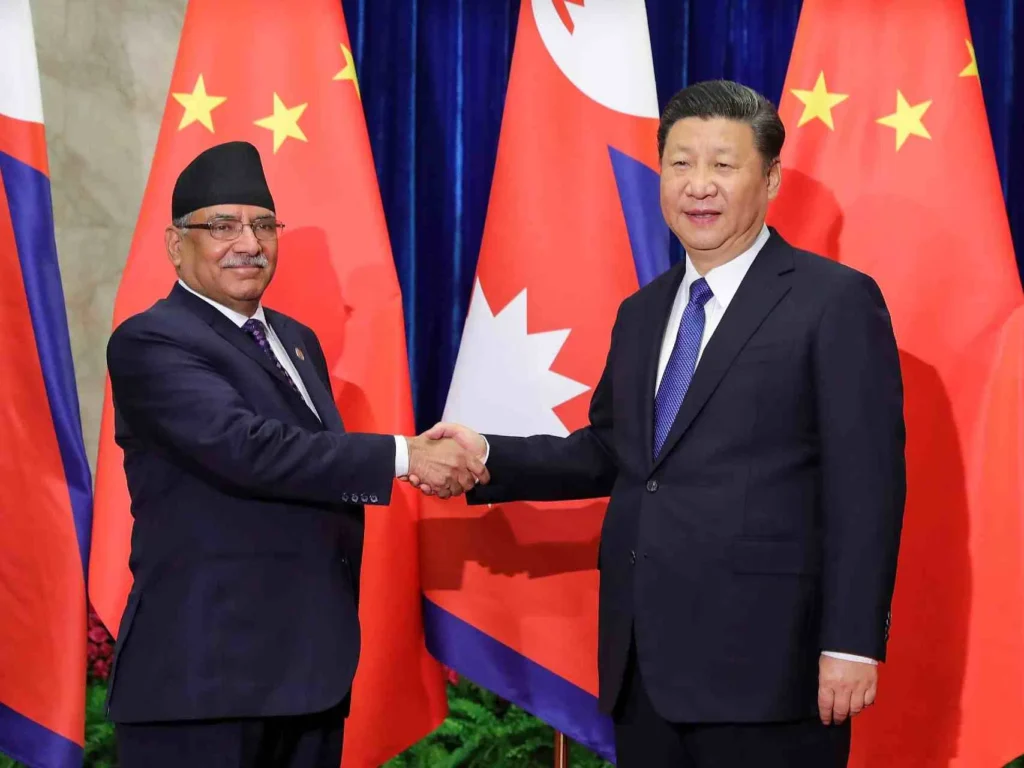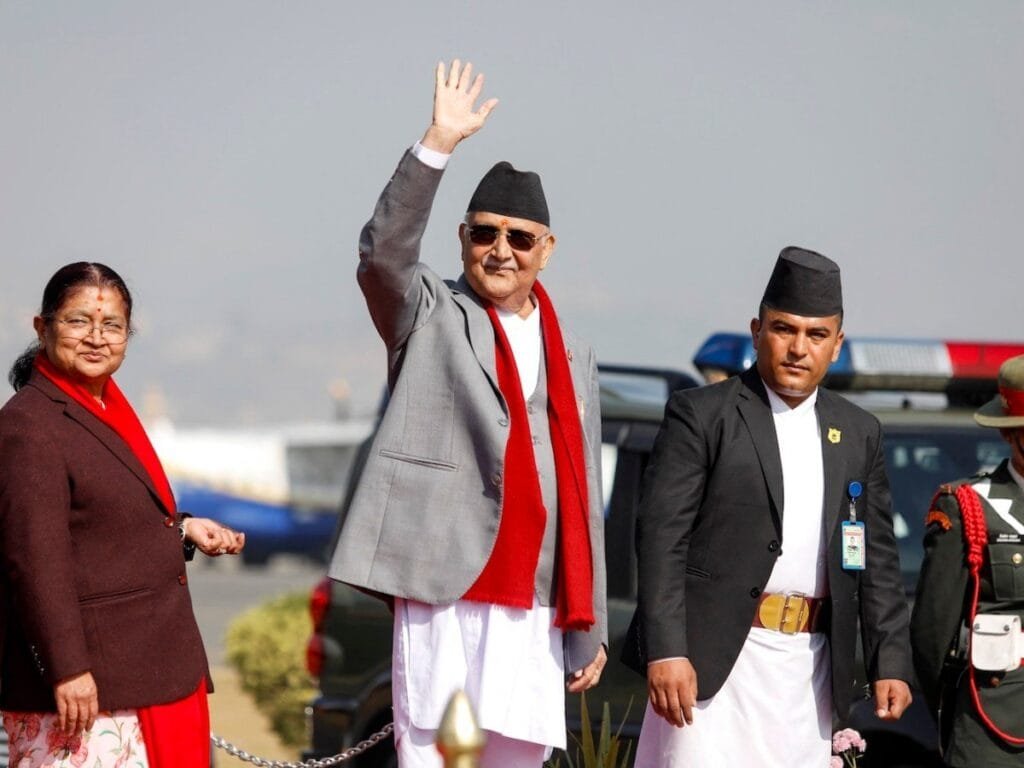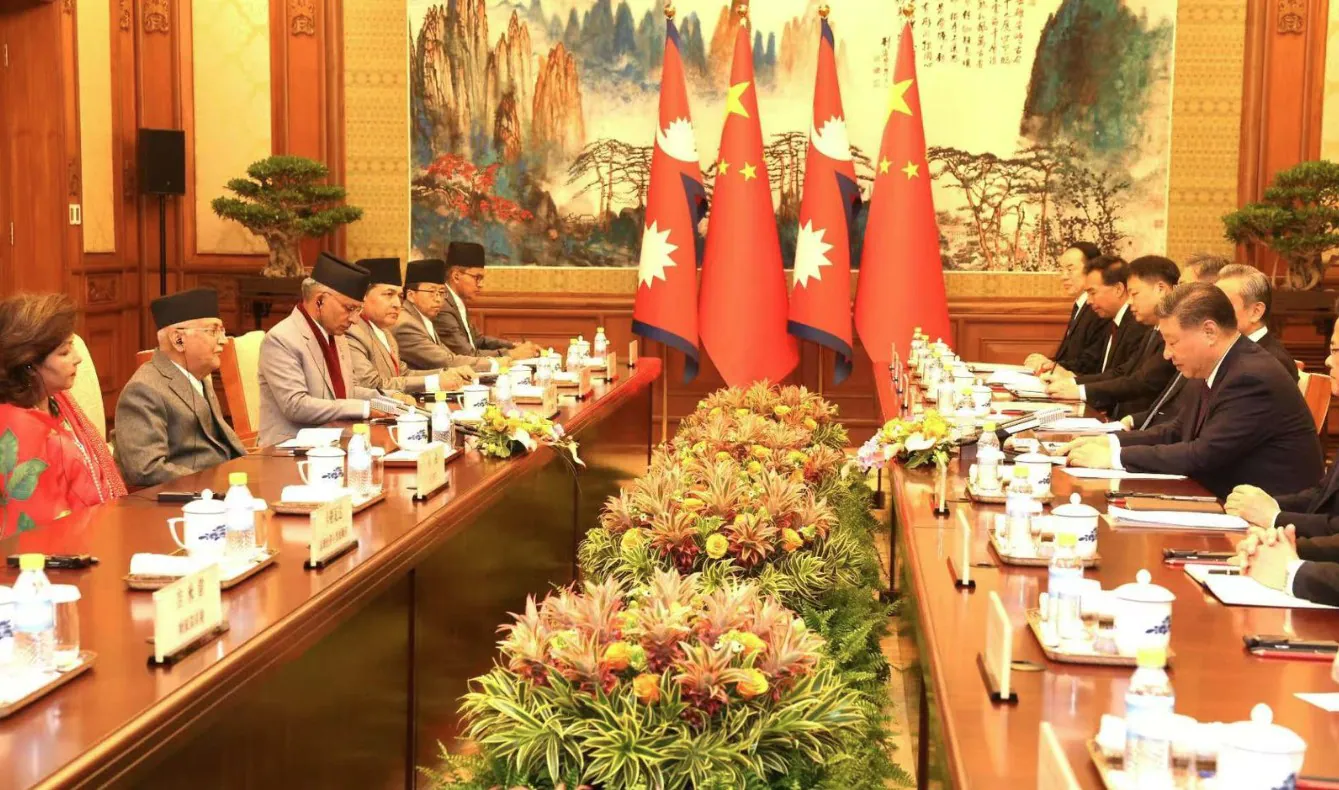Key Highlights:
Framework Agreement of BRI Cooperation
On 4 December 2024, Nepal and China signed a comprehensive framework agreement under the Belt and Road Initiative in Beijing. The framework agreement is the culmination of seven years of deliberations since the initial memorandum signed in 2017, detailing cooperation on several infrastructure projects such as upgrading roads and transportation corridors. The framework also discusses financing modalities, a subject of considerable debate in Nepal’s political circles.

Prime Minister Oli’s Historic China Visit
Prime Minister K.P. Sharma Oli’s visit to China, the first foreign trip since his assumption of office in July 2024, marks a new strategic pivot for Nepal in the direction of Beijing. Breaking away from the norm of visiting New Delhi first, Oli’s meetings with Chinese President Xi Jinping and Premier Li Qiang focused on deepening economic ties and reducing Nepal’s dependence on India, which currently accounts for two-thirds of Nepal’s international trade.

Historical Context and Previous Agreements
Nepal engaged with the BRI in 2017 by signing a memorandum of understanding, but implementation faltered due to the lack of a detailed cooperation framework and caution regarding possible debt traps. This new agreement hopefully will disperse these issues, thus paving the way for workable project implementation.
Domestic Discussions and Concerns
Within Nepal, a whole host of debates has developed surrounding BRI. Questions about loans sustainability are forcing a debate as to which are loans from Chinese coffers and that constitute grants. Prime minister Oli assured that none would sign any loan in the Chinese visit; the prime minister maintained the fact that BRI per se was not loan oriented.
Regional Implications and India’s Perspective
This move by Nepal towards China’s BRI has become a cause of concern for India, especially because of the historical and strategic relations between New Delhi and Kathmandu. The BRI is perceived as an expansionist tool for Chinese influence in South Asia, challenging India’s traditional sphere of influence. Nepal’s move is seen as part of a larger regional trend, where neighboring countries are increasingly engaging with China, which is making India reassess its foreign policy strategies.
Potential Benefits for Nepal
For Nepal, the BRI provides opportunities to improve infrastructure, boost economic development, and transition from a landlocked to a land-linked nation. Projects under consideration include the China–Nepal railway and various highway upgrades, which could significantly improve connectivity and trade prospects.
Challenges and Future Outlook
Despite the potential benefits, problems still abound. For a project to be financially sustainable and not too debt-ridden is another; relations with both China and India need to be properly balanced so that it keeps Nepal’s sovereignty on firm ground and maintains stability within the region.
Conclusion
Nepal’s official accession to China’s Belt and Road Initiative is one of the most critical steps in its foreign policy, which indicates a strategic turn towards Beijing. Prospective development in Nepal through this move requires careful management of domestic concerns and regional relationships, namely with India, so that the benefits of such cooperation are realized fully without compromise from national interests.
For Latest News Updates Click Here
